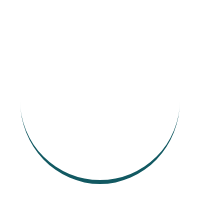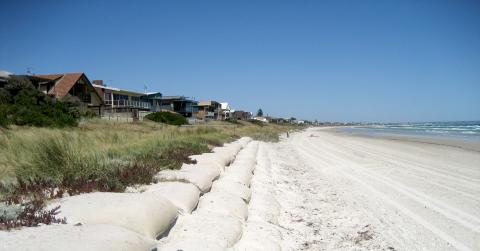

- Home
- News & Insights
- Ensuring your geosynthetic sand containers are up to the challenge
Geotextile sand containers have been used for the protection of Australian coast and river shorelines for nearly 25 years. The ELCOROCK® system including the material, sizing and fabrication was developed in Australia to withstand the local conditions which is one of the most hostile environments when it comes to UV degradation on materials.
How do you ensure the product you are specifying is suitable and what questions should be asked?
It all comes down to Research & Development (R&D), testing and history.
Twenty-five years ago, the need for a durable geotextile for use in sand containers became apparent. The use of rock, hessian sand containers, concrete, car tyres and even old car bodies was not sustainable and the search was on to find a durable and robust geotextile.
Several factors come into play when designing a product that will be used in a coastal application. The material needs to be able to resist extended exposure to high UV. The product must also be able to withstand the penetration of hydrocarbons that are found in waterways. When fabricating a geotextile into sand containers it needs to have the ability to elongate and be flexible, it is also a requirement for the material to have high puncture resistance and be permeable. The stitching used in joining the material panels together are a crucial part of the product. Seam failures will result in project failures.
Let’s look at the Research &Development (R&D), testing and history of the above-mentioned points.
UV Stability
In regions such as Australia and the Middle East, UV degradation is one of the most important considerations when it comes to survivability of any geosynthetic sand container. Container structures used on coastal applications are often exposed due to the natural sand movement and it’s important that the geotextile used has the highest UV resistance.
Question to ask when sourcing a sand container: Are the fibres used in the material the highest UV stabilised fibres available and has the material been tested to AS3706.11 with a strength retention of 90%?
Hydrocarbons
Coastal and waterway sites are often close to boat ramps or shipping lanes which exposes the material to hydrocarbons (diesel) on a regular basis. These chemicals can be detrimental to the life of some geotextiles resulting in shorter design life of a structure.
Question to ask when sourcing a sand container: Has the material being used either as a rolled good or GSC been analysed using AS3706.12 with the result being >90% strength retained?
Elongation
A high elongation geotextile allows the containers to contort adequately during filling and allows the structure to selfheal if required. A definitive elongation or greater than 50% is recommended. Textiles that include a woven material in its composition generally elongates less than 15% before rupture.
Question to ask when sourcing a sand container: Will the specified geotextile be able to elongate enough to limit damage during installation and allow flexibility within the structure?
Puncture Resistance
Vandalism and other incidents of damage to geosynthetic sand containers is unavoidable. The geotextile must then have a high level of puncture resistance and allow the ingress of sand into the geotextile to reduce the likelihood of damage. A composite geotextile which has an added layer of needle punched UV stabalised fibres will act as a vandal deterrent layer. This outer layer of fibres can trap close to 3kg/m² of sand which prevents damage from sharp implements.
Question to ask when sourcing a sand container: Has the proposed material undergone puncture testing such as rock drop simulation?
History
The extreme conditions experienced in Australia mean the above-mentioned points are a necessity to ensure a coastal project survives its life expectancy. Apart from the Australian standards testing regime that should be required to be met for any geotextile, it is the “real life” experience that is the true test of any product.
Sand filled geotextile containers have been used in Australia for over 20 years with exhumation of several containers (ELCOROCK®) from numerous sites displaying little degradation of the material and the containers.
Questions to ask when sourcing a sand container: What history details can the material manufacturer provide showing how the geotextile endures the harsh Australian conditions including test reports after 20 years of “real life” data?
Related News
Related Products
Related Sectors
KEEP UP TO DATE WITH THE LATEST FROM
GEOFABRICS BY SUBSCRIBING TO OUR NEWSLETTER
GEOFABRICS
AUSTRALASIA
PTY LTD


